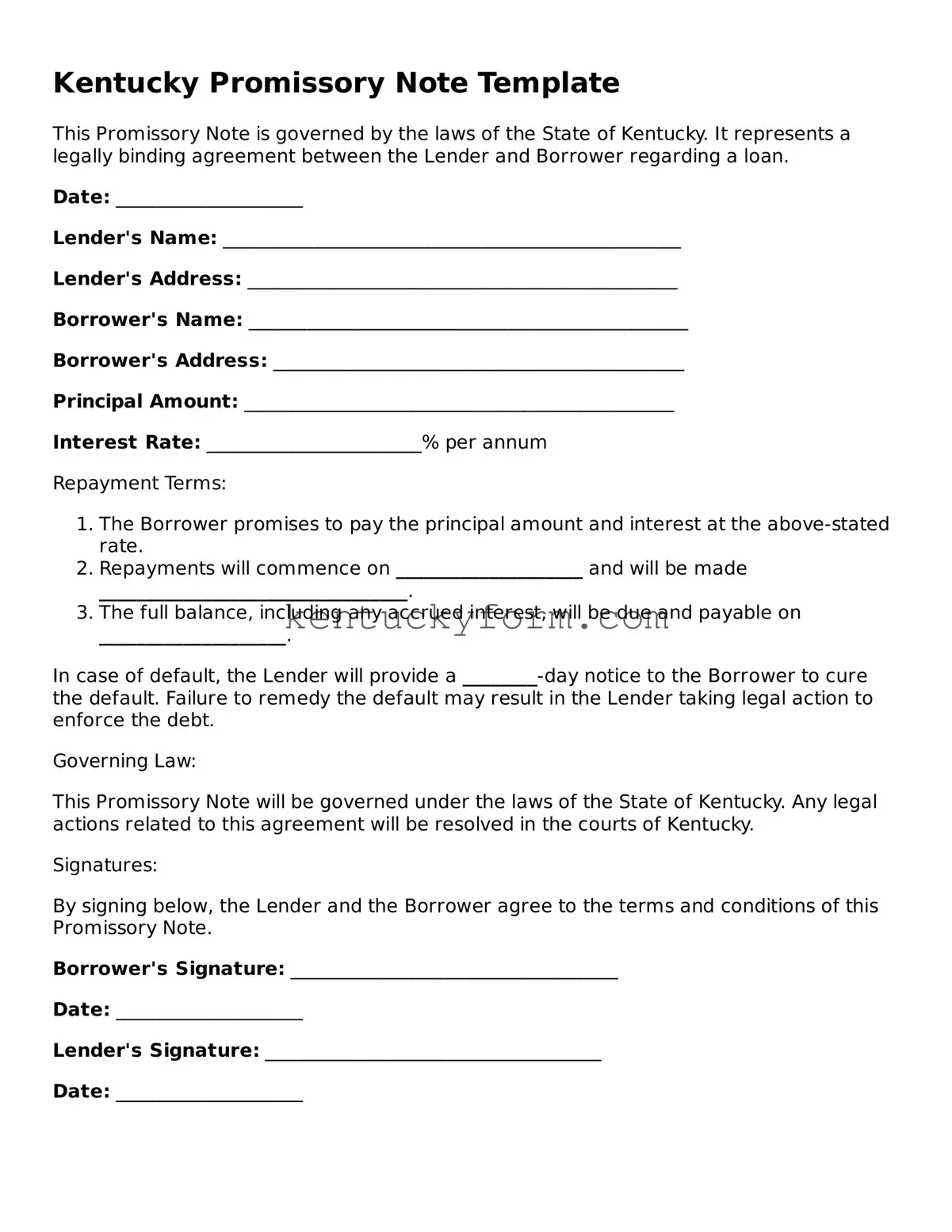The Kentucky Promissory Note form bears strong similarity to a Loan Agreement, as both establish a legal binding between the borrower and the lender that involves borrowing money. The distinction largely lies in the detail and scope; while a promissory note tends to be simpler and outlines the key terms like amount borrowed and repayment schedule, a loan agreement goes more in-depth, covering clauses such as default terms, collateral requirements, and legal steps on non-payment.
Much like the Mortgage Agreement, the Kentucky Promissory Note also sets terms for borrowing funds. However, the Mortgage Agreement uses real estate as collateral to secure the loan. If the borrower fails to comply with the terms of the mortgage, the lender can foreclose on the property. A promissory note may or may not be secured, and when it is, it can involve various types of collateral, not just real estate.
A Bill of Sale is another document sharing common ground with the Kentucky Promissory Note, especially when the sale involves payment installments. Both documents serve to formalize an agreement between two parties; however, a Bill of Sale transfers ownership of goods or property specifically, while a promissory note records the promise to pay a debt under the agreed conditions.
An IOU (I Owe You) document, similar to a promissory note, represents an acknowledgment of debt. Despite their likeness in confirming a debt exists between two parties, a promissory note is more formal and provides detailed payment terms and a repayment schedule, thereby offering more legal protection and clarity for both sides involved.
The Kentucky Promissory Note parallels a Personal Loan Agreement, given both are used in circumstances where an individual borrows money from another party. The difference mainly lies in their formality and the inclusion of specific details, where personal loan agreements might include detailed provisions about the relationship between the parties, interest rates, and consequences of late payments.
Closely related to the concept of a Kentucky Promissory Note is a Student Loan Agreement. Both documents establish the terms for borrowing money and repaying it over time, including the repayment plan and interest rates. However, a Student Loan Agreement typically encompasses provisions specific to educational funds, such as deferment options during school enrollment and grace periods after graduation.
The Line of Credit Agreement also shares similarities with the Kentucky Promissory Note, as both involve borrowing terms. A Line of Credit Agreement, however, outlines the terms under which a borrower can repeatedly draw on a line of credit up to a certain limit over a set period, making it different from a promissory note which typically pertains to a single loan amount and its repayment.
Another document that aligns with the Kentucky Promissory Note is a Car Loan Agreement. This specific agreement covers financing for the purchase of a vehicle, requiring the borrower to repay the loan amount plus interest. Much like a promissory note, it lays down the repayment obligations; however, it's specifically tailored to the conditions surrounding vehicle financing, like vehicle description and repossession terms in case of default.
Lastly, a Rent-to-Own Agreement can be similar to a Kentucky Promissory Note in scenarios where an asset is being purchased in installment payments. Nonetheless, it diverges in purpose; a rent-to-own agreement combines elements of leases and sales contracts, allowing rental payments to contribute toward the purchase price of the property or item, ultimately leading to an ownership transfer, unlike a straightforward debt repayment structure in a promissory note.
